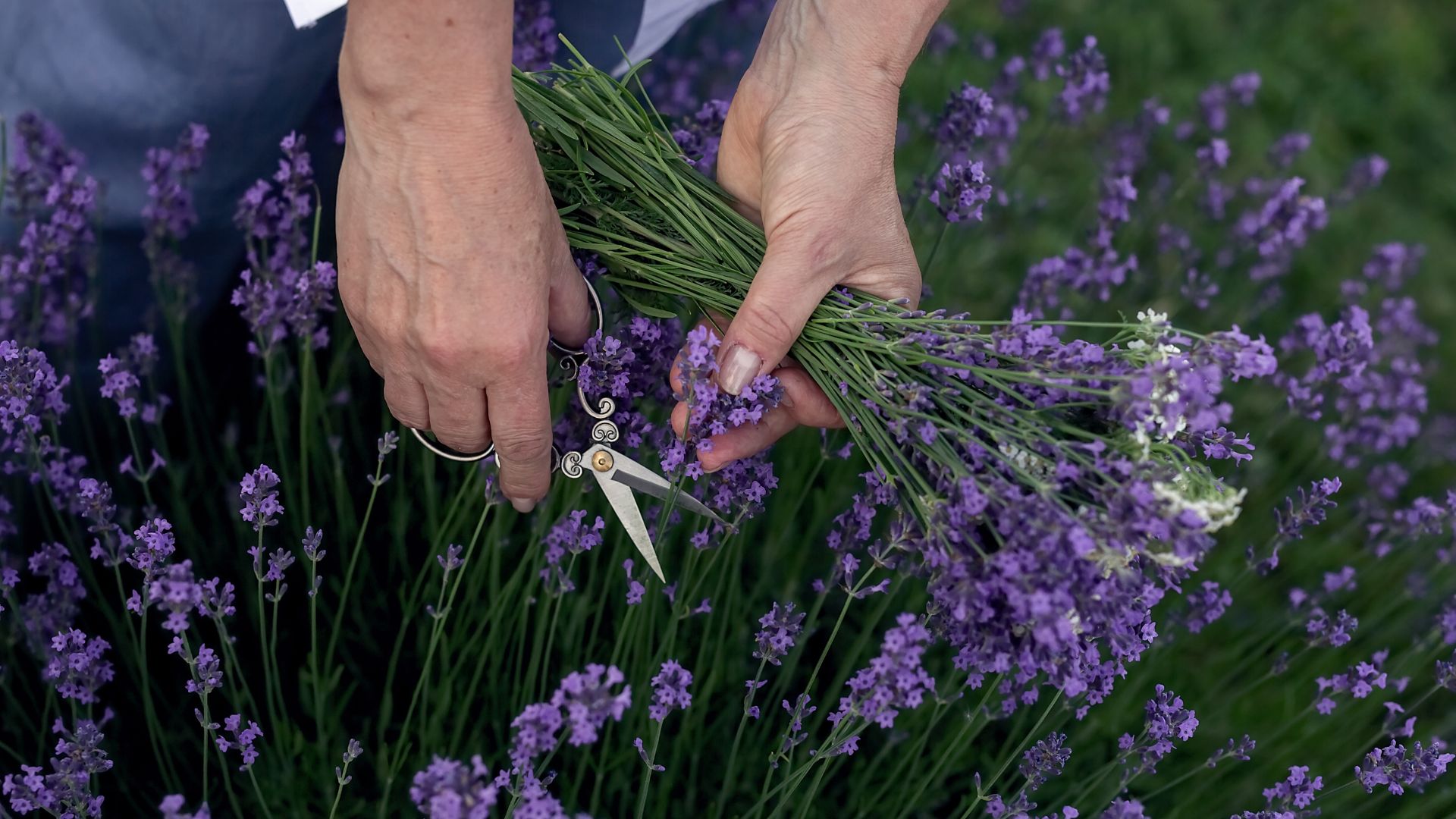
The endless benefits of growing lavender far outweigh its care needs. As a low-maintenance plant it doesn't need much interference but we asked plant experts for their best tips on keeping the soothing flower happy and growing for longer.
Aromatic plants will always be one of our favourite timeless garden trends and they're the very best way to make your garden smell nice all year round. When it comes to lavender, this plant can also help deter neighbourhood cats from your garden and when harvested its flowers are great for relaxing you.
So, how can you keep this wonder plant growing gloriously for many years to come? Here's what our team of experts recommend.
How to care for a lavender plant
Looking to add some more of the best plants for a garden to your outdoor space? Lavender comes highly recommended for various reasons, one being that it's rather easy to look after and will give back just as much love as you put into it.
1. Ensure exposure to sunlight

As one of the best plants to help you recreate a Mediterranean paradise in your garden, it's no surprise that lavender absolutely adores the sun.
"Lavender needs full sun to thrive, so your lavender must be getting at least 6-8 hours of direct sunlight each day," explains the director of Seed Barn, Shane Dibbs "This plant is a sun worshipper and grows best when in sunlight."
Should you be growing the plant specifically to harvest it for scenting purposes then Shane stresses the importance of this sun exposure. He says, "If you are growing lavender for the coveted scent, your plant must receive direct sunlight because essential oil production in the flowers is dependent on plenty of hot, sunny weather."
2. Watering
Similarly to some of the easiest houseplants to keep alive, you won't need to panic much when it comes to the watering routine of your lavender plant.
"Newly planted lavender needs to be watered once or twice per week until it’s established. Once mature, lavendered is drought-tolerant and typically only needs watering every two weeks," says Shane.
Just make sure you water at the base of the plant so don't soak the foliage as this can lead to a fungal disease which will turn the lavender brown with black spots.
3. Fertilising
Fertilising is a great way to get more from your plants, whether you do this by using coffee grounds in your garden or simply by knowing how to make compost at home. Fertiliser can provide your plant with nutrients it may be lacking or without in its natural state.
Jane Dobbs, head gardener at Allan's Gardeners explains that there is no exception for lavender plants but there is the risk of overdoing it. She says, "There's no need for a lot of fertiliser with lavender, and it usually does better in poor soil.
You can use a balanced, slow-release fertiliser in early spring, but don't overfertilise, as this can make the plant produce less oil."
4. Carry out measured pruning

Mastering how to prune lavender isn't quite the mammoth task as say pruning a rose bush would be but it is just as important.
"Regular pruning keeps lavender plants healthy and bushy," Jane explains. "After the first bloom, prune lightly, and more heavily in late summer or early autumn, without cutting into the woody stems."
More specifically Jane recommends trimming the plant back by one-third, shaping it into a mound.
She warns, "Don't cut into old wood, as lavender struggles to regrow. Applying a light mulch of gravel or sand can help retain moisture and keep weeds away. But don't use organic mulches like straw or wood chips because they can hold too much moisture."
5. Consider air circulation
Along with the usual suspects of plant care, lavenders also thrive from a certain amount of air circulation. Surprisingly some of the most common alluring plants that liven up your garden will also benefit from this same condition.
Shane says, "Lavenders love a breeze almost as much as they love the sunshine, and fresh air is incredibly important for healthy growth. Stagnant air is bad for lavender flowers as it can lead to moisture buildup and fungal diseases.
To prevent this, space your lavender plants adequately to give them proper space to grow and thrive."
Allowing your hardier plants room to enjoy the breeze is a great easy gardening tip that all gardeners should know and practice.
FAQs
How do you harvest lavender
As mentioned previously lavender has many uses, one being a way of making your home smell good. So harvesting the plant is common but knowing the best way to do it and getting the timing right is important.
Graham Smith MCIhort, a horticultural expert from LBS Horticulture, explains, "When you can harvest lavender will depend on what you are going to be using the flowers for. If you intend to make bundles of dried lavender, harvest the flowers early in their growing season when the blossoms first open."
Should you be using the lavender for cleaning, then Graham says you'll need to harvest before the blossoms open and turn brown. For bouquets, he suggests harvesting when roughly half the flowers have opened as additional buds will bloom after you've cut the stems. And for essential oil, wait until most of the blossoms have opened.

For the method of harvesting, you should be prepared with the tools every gardener needs. Graham says, "Ensure that you are harvesting your lavender using clean, sharp tools, as this will help the plant to heal quickly after it has been cut."
"Aim to cut around no more than two-thirds of the plant's height or just above the bottom few sets of leaves on each stem, as this will allow the lavender to grow back. Avoid cutting into the woodier parts of the plant, and keep cut stems in a shady area to help preserve their colour and fragrance for longer," he continues.
How to repot a lavender plant
If you've followed this guide well enough then your plant might be outgrowing the container it's in and it may be time to learn how to repot your plant.
Jane says it's best to repot lavender in spring, just before new growth starts. This lets the plant set up in its new container before the growing season starts. To do this, she explains, "Replace the old pot with one that's 1-2 sizes bigger.
To keep your pot from getting waterlogged, make sure it has drainage holes at the bottom. A day or two before repotting, water the lavender thoroughly. It loosens the roots and reduces stress on the plant when you repot."
After this, gently tip the pot on its side and slide out the lavender plant, if the soil is stuck just lightly tap it with a trowel to loosen it. She warns again pulling on the plant stems as this can lead to damage.

"Look for circling or compacted roots in the root ball. Use your fingers to loosen roots that are tightly wound or try making a few shallow cuts with a clean knife. Add well-draining potting mix to the new pot. Perlite or coarse sand will help with drainage," she continues.
Finally, put the lavender plant in your new pot at the same depth it was in the old one and gently firm down the potting mix around the sides. Once repotted, water thoroughly yet gently to settle the soil and allow the excess water to drain from the bottom.
Jane says, "Ensure your repotted lavender plant gets plenty of sun and over the next few weeks, monitor if the lavender plant adapts well to its new pot. When the plant shows signs of growth, start watering again."
Another great thing about lavender is that it hardly attracts pests, so you won't have to fight against aphids, mites or spittlebugs all that often. If you do see any pests then use an insecticidal soap or some water to remove them.







